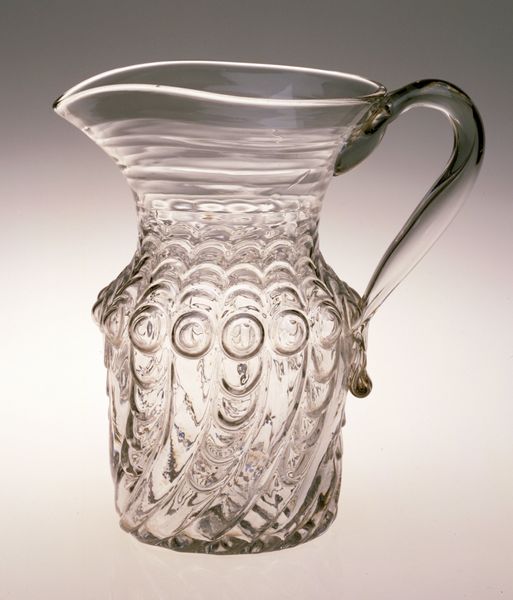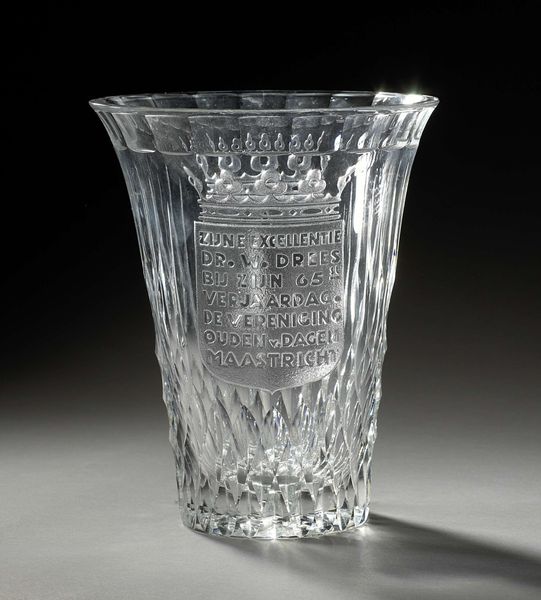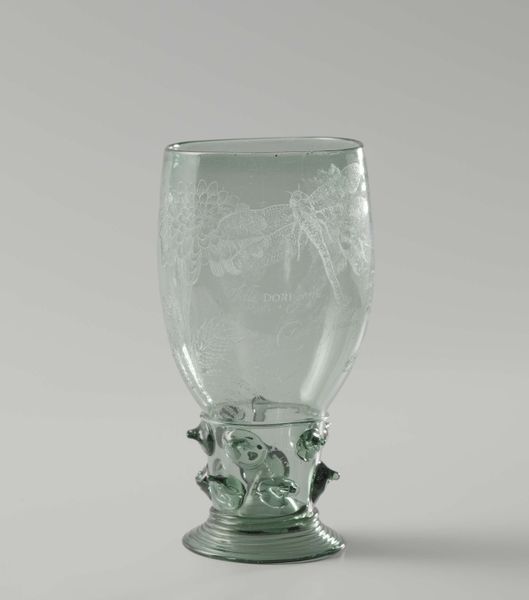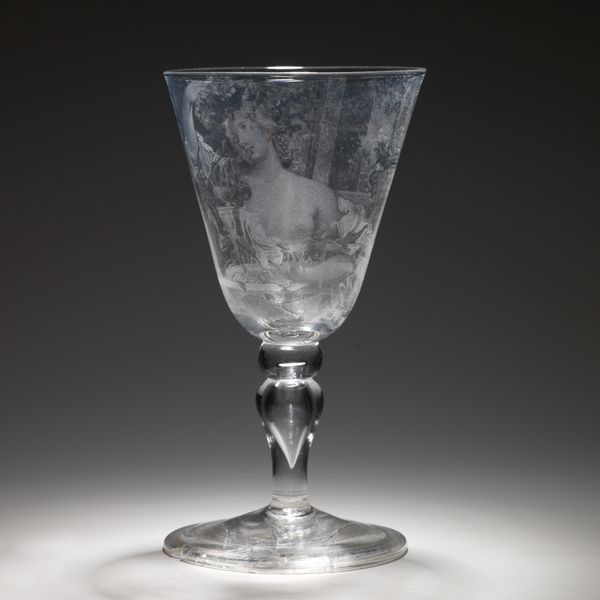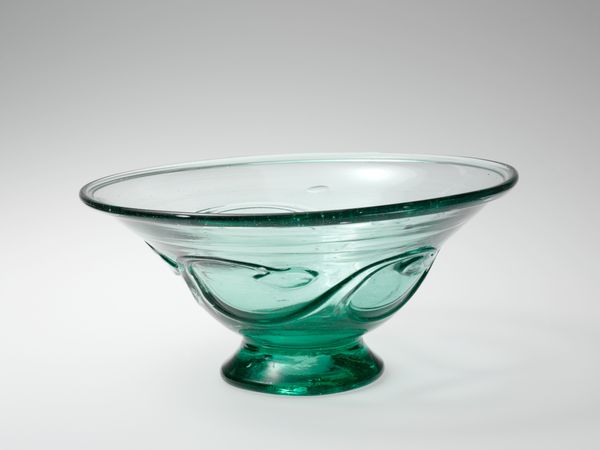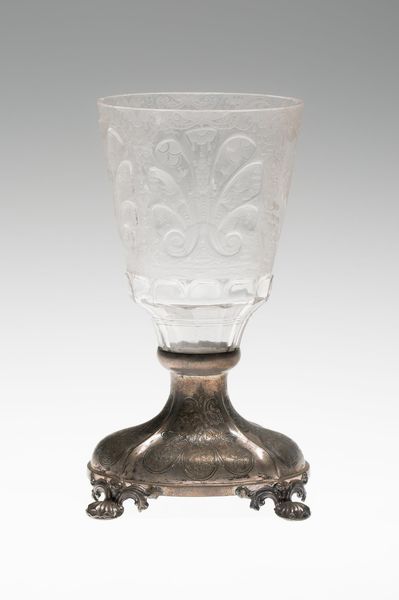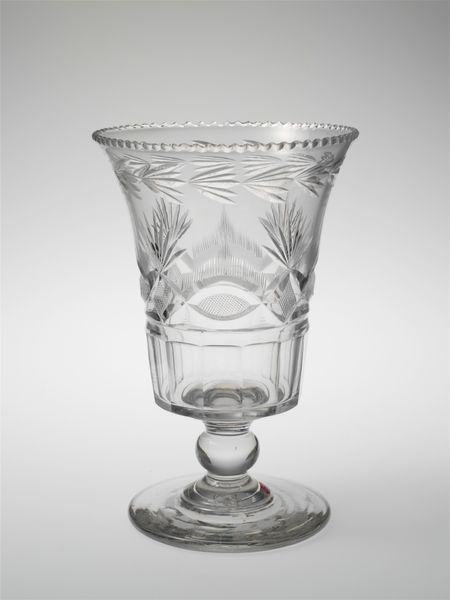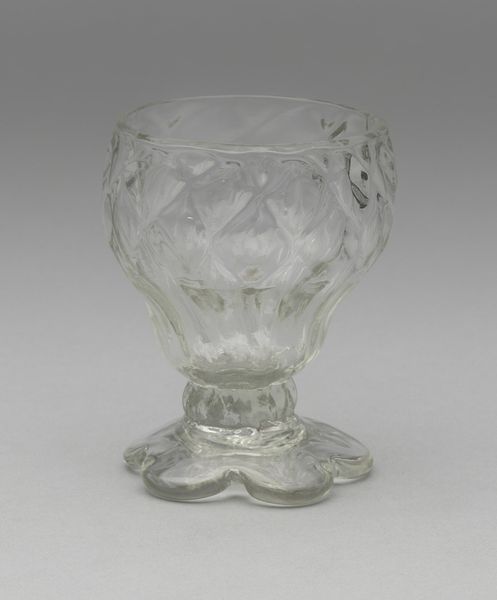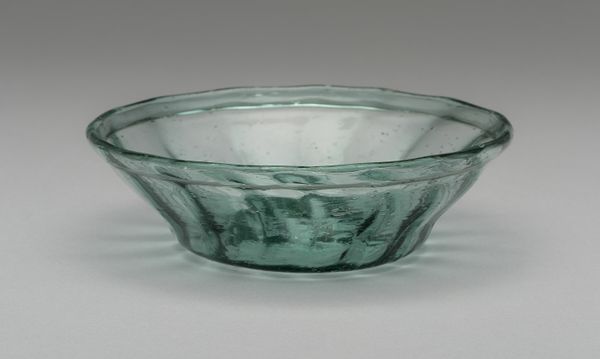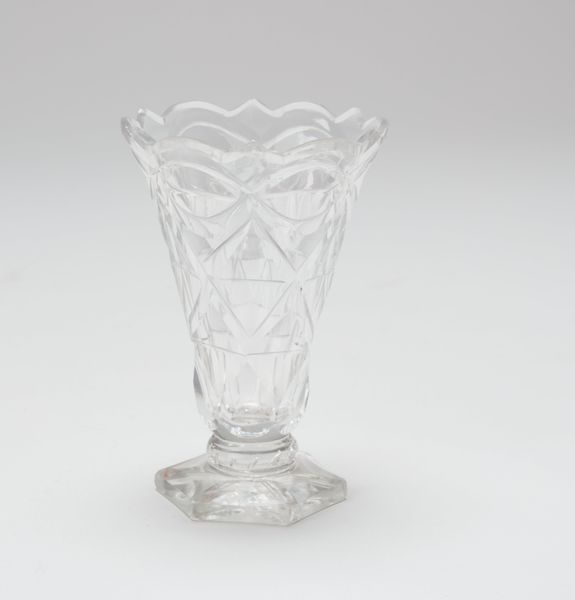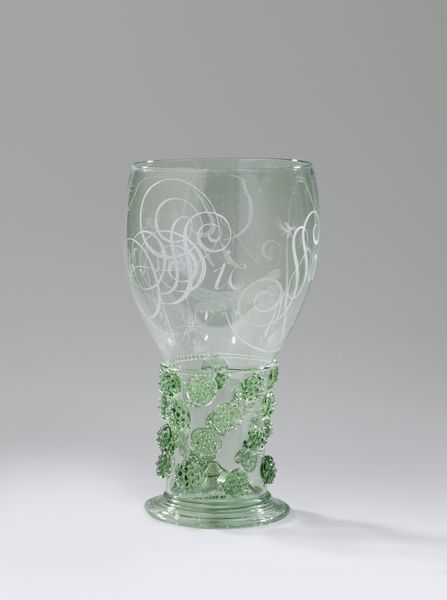
glass, sculpture
#
baroque
#
glass
#
sculpture
#
ceramic
Dimensions: height 15.0 cm, diameter 15.5 cm, diameter 10.2 cm
Copyright: Rijks Museum: Open Domain
Editor: So, this is a Berkemeyer, made of glass in 1646, and currently residing in the Rijksmuseum. It's surprisingly ornate for a drinking vessel, I think. All those applied prunts... What do you see in this piece? Curator: Well, immediately I'm thinking about Dutch Golden Age society. These glasses weren't just decorative, they were deeply symbolic. Drinking itself had political and social dimensions. The *berkemeyer’s* fragility speaks to the precarity of pleasure, but also reflects the status of its owners during a time of massive shifts in global economics due to colonialism and mercantilism. What purpose do you think this glass held, literally and figuratively, for those who could afford one? Editor: So, more than just something to drink wine from... something to show off, maybe? It’s a way to participate in a specific social performance? Curator: Precisely! It's a carefully constructed performance of wealth, taste, and, dare I say, participation in the existing global power structures of the 17th Century. Even the material itself - glass - speaks to international trade routes, craftsmanship, and status. Did everyone have access to glass? Who benefitted from these intricate decorations? Editor: That makes me think about labor, too. The artisans who created these probably weren't the ones drinking from them. A power imbalance, right there. I guess objects like these always contain a kind of paradox. Curator: Exactly! It prompts a lot of crucial questions. Objects always speak more when we explore their full historical and social dimensions. We must consider whose stories are left out and how objects reify hierarchies of wealth and privilege. Editor: I’ll definitely think about it that way from now on. There is so much to explore about this goblet.
Comments
rijksmuseum about 2 years ago
⋮
Engraved on the bowl of this glass are the words ‘Vincens tui’ (Conquer thyself). Anna Roemers Visscher derived the butterfly and fly motifs from a late 16th-century print by Nicolaes de Bruyn.
Join the conversation
Join millions of artists and users on Artera today and experience the ultimate creative platform.

